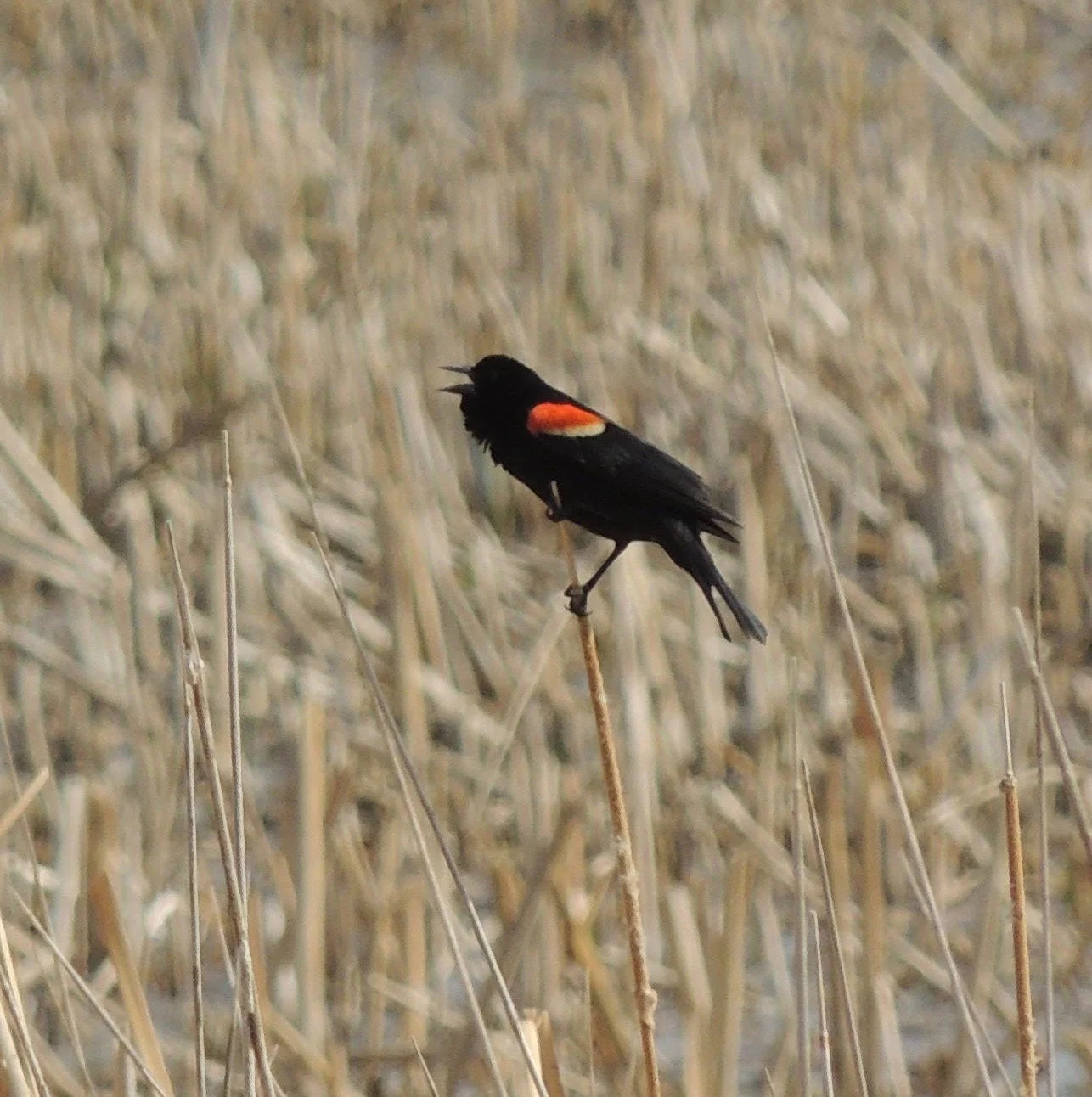Into the Woods with Curio: Bird Calls Made Easy
Doug Smith
“Sing to the LORD a new song; sing to the LORD, all the earth.” Psalm 96:1
Spring is the time when the birds are singing. It’s breeding season and they call with an amazing assortment of songs and sounds from everywhere – around your neighborhood, and in the woods at camp – to claim territory and attract mates. But the volume and variety of sounds is confusing. How can you tell which bird is making what call?
Some calls are familiar – the caw of a crow, a robin’s cheery song, the chirping of house sparrows and the whistling of cardinals. The loon’s eerie call from the camp lake is unmistakable, as is the booming of the whip-poor-wills at night! But which bird is making that long trill from over in the bushes? What bird sounds a bit like a robin, but different? And who makes that hauntingly beautiful descant late in the evening at Family camp?
One way to know what bird is making which call is to find the bird, of course. When you hear an unfamiliar bird song or call go on a bird safari. Hunt down the bird making the song – maybe using some binoculars – until you find it and hear it calling. Once you associate the bird with its song, you’ll remember it the next time you hear that song. If you aren’t sure about the ID of the bird when you do see it, there is an app for that. Called Merlin, and available at merlin.allaboutbirds.org, it is designed to help identify bird sounds, as well as bird ID in general.
Putting words to a bird’s song also helps to identify some birds. The white throated sparrow’s beautiful melody sounds something like, “pure sweet Canada, Canada, Canada”. The ovenbird is a small warbler with a very loud song that sounds like ‘teacher, teacher, TEAcher, TEACHer, TEACHER! They are quite common at camp, but spend most of their time hidden on the forest floor, so are heard rather than seen. A red winged blackbird makes a loud ‘conkaree’ call down at the waterfront, (in Quebec it says ‘Aujourd hui’). Barred owls hoot their loud, ‘Who cooks for you, who cooks for you-AWL’ in the middle of the night.
Other birds, like the whip-poor-will, say their names. Chickadees say chickadee, with many variations, while phoebes repeat their name over and over. And catbirds really do meow like a cat.
So why should we care about the songs and sounds birds make? God has given us an incredible collection of birds – over 10,000 species worldwide. Each has its own unique song, but all tell of His greatness. And every one of us that is redeemed also has a unique song of praise for God.
